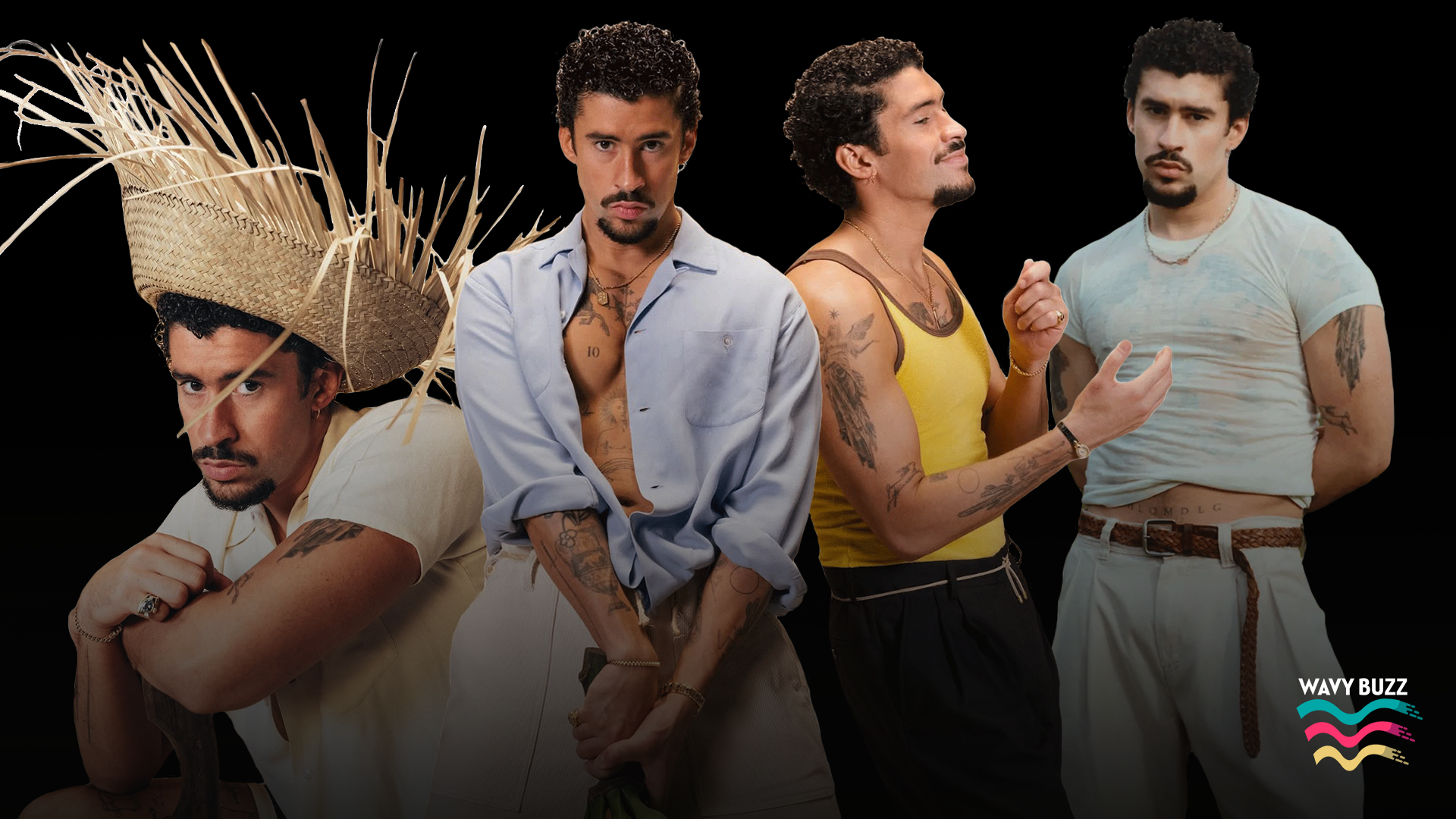For the past half-decade, Bad Bunny has done more than dominate music charts — he’s shifted the cultural axis. Through his sound, style, and swagger, Benito Antonio Martínez Ocasio has become not just a global pop star but a mirror reflecting what modern identity looks like.
Born in Vega Baja, a small coastal town 40 minutes outside San Juan, Benito grew up singing in his church choir. His parents, Tito Martínez and Lysaurie Ocasio, filled the house with everything from salsa to pop ballads — music that shaped his eclectic ear long before he discovered reggaeton pioneers like Daddy Yankee and Héctor Lavoe.
Young Bad Bunny pic.twitter.com/T9eIE8X6uH
— Bad Bunny Global News 🐰 (@badbunny_global) August 5, 2025
By his early teens, he was already posting original songs to SoundCloud under the alias Bad Bunny, a nickname that stuck. Within a few years, that digital experimentation turned into global stardom.
From SoundCloud to Stadiums
Bad Bunny’s first brush with recognition came in 2016, when DJ Luian stumbled across his track Diles online and signed him to Hear This Music. Their first major release, Soy Peor, broke into Billboard’s Latin charts and established his reputation as the new face of Latin trap.
Soon, collaborations with Karol G and Ozuna followed. His bilingual charisma made him a natural bridge between audiences — the rare artist who could headline a Puerto Rican festival one night and command American radio the next.
By 2018, he was no longer a regional star. His collaboration with Cardi B and J Balvin on I Like It became a global smash, topping the Billboard Hot 100 and staying there for nearly a year. His debut album, X100PRE, landed on Rolling Stone’s “500 Greatest Albums of All Time.”
A year later, he performed at the Super Bowl LIV halftime show alongside Shakira and Jennifer Lopez — a performance watched by over 100 million people. Days later, he dropped YHLQMDLG (Yo Hago Lo Que Me Da La Gana), which shattered records as the highest-charting all-Spanish album in history.
The Reign of Bad Bunny
From there, his ascent became historic. YHLQMDLG earned him a Grammy, made him Spotify’s most streamed artist, and turned his irreverent, gender-fluid aesthetic into a cultural signature.
When El Último Tour del Mundo debuted at number one on the Billboard 200 — the first all-Spanish album ever to do so — Bad Bunny wasn’t just making music history; he was redefining what a global pop star could look and sound like.
Then came Un Verano Sin Ti, a sun-soaked masterpiece that broke Spotify’s all-time streaming record and earned a Grammy nomination for Album of the Year. Its success fueled a $230 million North American tour, proving his dominance wasn’t confined to Latin markets.
Back Home, by Choice
After a brief hiatus, Bad Bunny returned in 2024 with Debí Tirar Más Fotos (“I Should’ve Taken More Photos”), a deeply Puerto Rican project that doubled as a love letter to the island that raised him. To underscore that commitment, he announced a 30-date residency in Puerto Rico — scheduled during hurricane season, when tourism usually plummets.
The residency became an economic lifeline. According to Wells Fargo, the shows generated nearly $400 million in local spending. Global stars like Becky G, LeBron James, and Kylian Mbappé flew in to watch.
LeBron pulled up to Bad Bunny's concert in Puerto Rico 👑🔥
— Bleacher Report (@BleacherReport) July 12, 2025
(Via @wilkinmeta) pic.twitter.com/CVhEXloykh
But one decision overshadowed the celebration: Bad Bunny skipped the United States entirely. His reasoning was pointed. “There were many reasons why I didn’t show up in the U.S., and none of them were out of hate,” he told i-D. “But there was the issue of—like, f—ing ICE could be outside [my concert].”
For an artist who often championed immigrant rights and Puerto Rican pride, the statement wasn’t a snub. It was a stance.
The Super Bowl Flashpoint
That stance took center stage again this fall when the NFL and Roc Nation announced Bad Bunny as the next Super Bowl halftime headliner.
The choice made perfect sense. Since 2019, Jay-Z’s partnership with the NFL has brought more cultural nuance — and star power — to America’s biggest stage, with performances from Rihanna, The Weeknd, and Kendrick Lamar. But this time, the reaction was split down the middle.
Right-wing commentators called the pick “un-American.” Homeland Security Secretary Kristi Noem even tweeted that ICE would be “present” outside the stadium during Bad Bunny’s performance — a threat that quickly went viral. President Donald Trump piled on, dismissing him at a press conference: “I don’t know who he is. I think it’s ridiculous.”
Conservative media doubled down. Turning Point USA announced an “All-American Halftime Show,” a counterprogram to air at the same time, inviting fans to vote for “classic rock” or “anything in English.”
On Saturday Night Live, Bad Bunny clapped back. Hosting the show, he teased, “If you don’t understand my songs, you have four months to learn Spanish.” The internet exploded.
Bad Bunny told Americans they had 4 months to learn Spanish if we wanted to understand the Super Bowl halftime show.
— Riley Gaines (@Riley_Gaines_) October 9, 2025
No thanks. We'll just have our own. Enjoy your low-rated halftime show. pic.twitter.com/VjGkNrjS00
America’s Ongoing Identity Crisis
The uproar isn’t about one artist — it’s about who gets to define American culture. The United States has always been a country of cultural contradictions built by immigrants, yet often hostile to their expression; proud of its diversity, yet uneasy when that diversity takes the spotlight. Bad Bunny’s selection for the Super Bowl halftime shows simply pressed on a long-festering nerve.
To many conservatives, “American culture” still means apple pie, football, and Bruce Springsteen. To younger, more diverse audiences, it looks like something else entirely — a fluid blend of Spanglish, trap beats, and cross-border identity. Both are part of the same story, but they rarely speak the same language.
The NFL, still navigating its own history of racial tension since the Colin Kaepernick fallout, knows that halftime shows have become more than entertainment. They’re cultural statements — a reflection of who America chooses to celebrate.
The Bigger Picture
In a way, Bad Bunny’s Super Bowl performance isn’t a controversy at all — it’s an inevitability. The artist represents a generation that doesn’t see cultural boundaries the way its predecessors did. His music is global by design, his fanbase multilingual, his politics unmistakably modern.
And that’s precisely what unsettles his critics. Because for them, the question isn’t whether Bad Bunny belongs on America’s biggest stage — it’s whether America still belongs to them.
The Final Play
When the lights go up in February and Bad Bunny steps onto that field, the performance will be more than a concert. It’ll be a referendum on what “American” means in 2025.
Bad Bunny’s story — from a kid singing in a church choir in Vega Baja to headlining the Super Bowl — is the American dream in its most inclusive form. He isn’t threatening American culture; he’s expanding it.
If that makes some people uncomfortable, maybe that discomfort is exactly the point. Progress, after all, doesn’t sing in one language.

